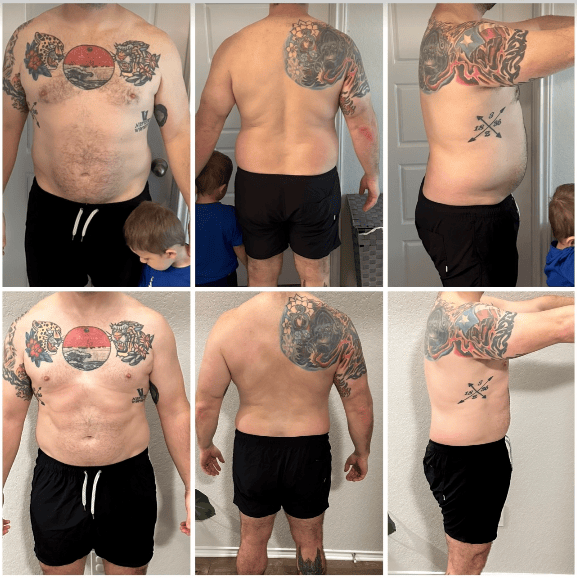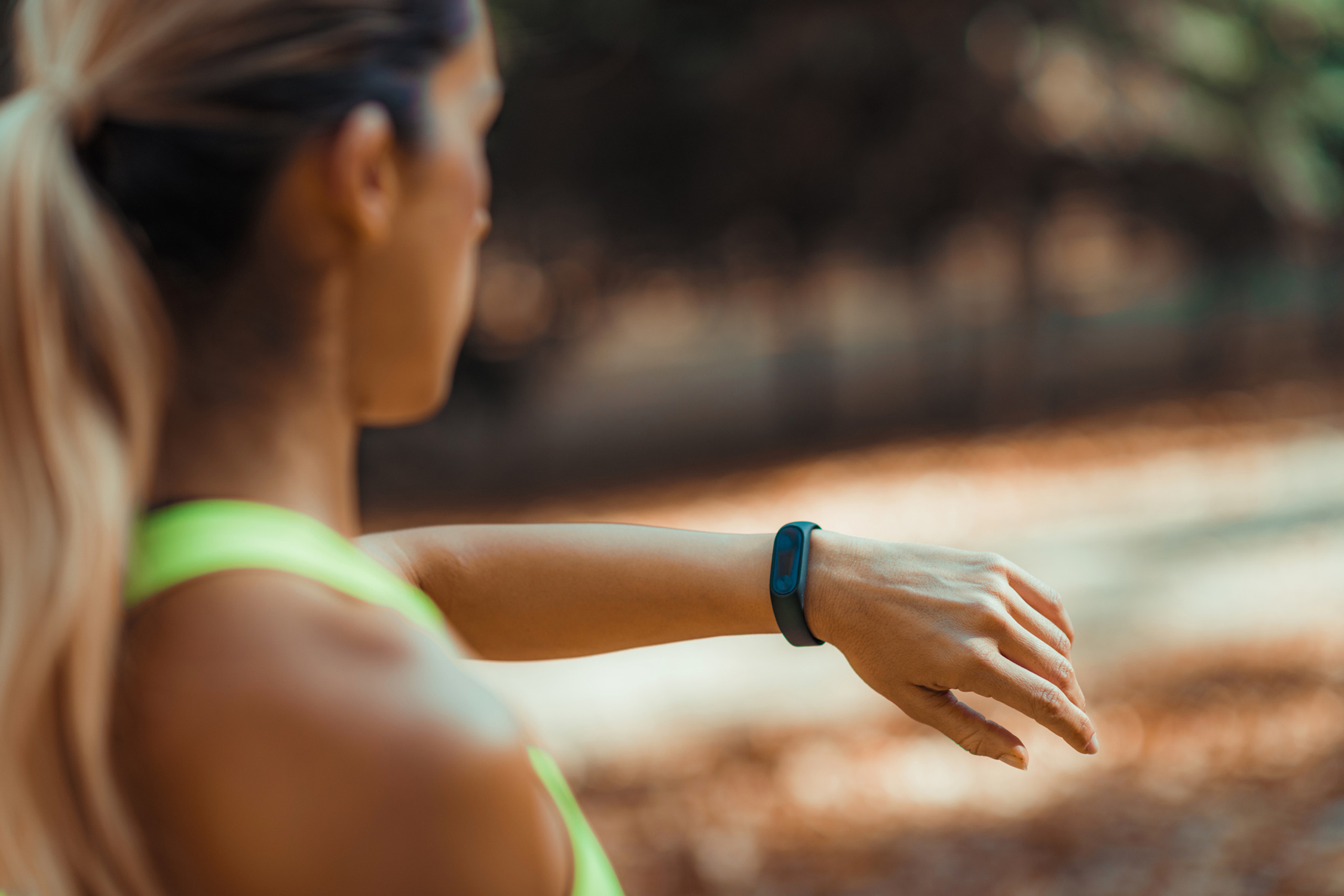In a previous Fit Tip we went through the rationale for why maintaining at least 8,000 steps per day can be so powerful and why working on getting up to 12,000 steps per day may be worth it for some people.
This week we are going to through the strategies that seem to be most likely to help people increase their physical activity.
First, according to multiple meta-analyses in recent years it looks like behavior change techniques can reliably increase physical activity! Woot Woot!
It also appears that techniques that emphasize person-centered and supportive communication styles are associated with better results long term and the potential top five strategies are listed below [1-4]:
1. Goal Setting for both for the behavior and the outcome
Setting outcome goals for your physical activity is great, but you also want to set behavior or process goals that will get you there. For example, I want to be able to run a mile in X minutes or squat X amount of weight are both outcome goals. You then want to think about the processes or behaviors that are going to effectively get you there…like running at blank pace at least twice per week or getting to the gym to squat at least twice per week. If just setting the outcome and process goals for physical activity seems daunting to you I generally recommend hiring a coach who can provide feedback and help you through this process. In my mind, you would almost never want to set an outcome goal without a process goal [5].
2. Graded tasks
This means people generally want to stair-step their goals and the level of difficulty of the tasks themselves. For example, if your ultimate goal is to get to 12,000 steps per day, but right now you are at 4,000 it may work better to try to progress that by an extra 2 or 3,000 steps per week. Another example, is that you may have the ultimate goal to squat 405 pounds, but if you are just starting it would likely be extremely dangerous to try to lift that amount of weight and someone with this goal may not even necessarily start off with a barbell on their back.
3. Action planning
This is my personal favorite in that you likely want to map out exactly when and where you are going to complete your task. I am going to walk for 20 minutes at Memorial Park right after I finish breakfast.
It is also worth thinking about the most likely barriers that might prevent you from meeting your process goals. For example, someone may have the process goal that they will walk for 20 minutes after lunch. This is a potentially great set-up and it involves stacking the walk to something you already do every day, but what happens if work gets hectic? What happens if you didn’t pack your lunch and you have to drive to get something to eat? Thinking through your plan and how it could get derailed will very likely increase the probability of hitting your goals!
4. Providing choice
One thing we have learned over the last few decades is that people tend to stick with stuff they enjoy. Go figure, and this is where providing a menu of choices and options for different types of physical activity can be so helpful.
If you don’t know what you like, my advice is to get out there and try some stuff and see if you can’t find something you really love or naturally gravitate towards. And an extra note to everyone reading this - there is actually something we can all do to increase the likelihood that more people will start and stay exercising…be nice and let’s work to make the gym, the park, the yoga mat, or the track as inviting and as comfortable as possible. Many people have pretty terrible memories of gym class and I have so much respect for every person that has the courage to show up and put in the effort and I think that that effort and courage is something we can all rally behind.
5. Self-monitoring and consistently utilizing a pedometer.
It looks like pedometers can increase step counts, but people actually have to consistently use them and this means that the strategies above are probably more important than just giving people an app and a pedometer. My personal advice is to make the data collection process as easy as possible. If you are having to charge your pedometer all the time and it is an absolute pain to sync the data you will probably stop using it and then it’s just wasted money.
If you use a pedometer with an app I would also make sure to think about the process goal setting, action planning, and graded tasks ideas above because those will potentially allow you to start hitting your goals without as much thinking.
What I mean by this is that we all have friends who are constantly checking their pedometer and pacing around if they are low on steps. That could work, but it seems like a lot more stressful and less sustainable approach than being more proactive and intentional from the beginning.
One more thing on self-monitoring, I think it is likely better to set weekly exercise or step goals and then aim for stringing successful weeks together instead of trying to hit daily streaks. As we have covered before in our Fit Tip on behavior change strategies aiming for streaks can be extremely effective and people don’t like losing them. But, if someone misses a day it can also lead to the “What The Hell” effect where people catastrophize and throw in the towel if the streak gets broken. “I have to get back to 100 days again! NO WAY AHHHHHH!”
The ultimate goal of increasing physical activity is to keep the streak alive and for us to be able to move for life!
We all likely want to maintain our functional capacity and autonomy for as long as possible and increasing physical activity is likely the most powerful habit to increase our health regardless of our age or our BMI so let’s keep the streak alive as long as possible and if you miss a day, a week, or even a month, no big deal what’s the plan?
#GIVEAFIT

REFERENCES:
1. Carraca, E., et al., Effective behavior change techniques to promote physical activity in adults with overweight or obesity: A systematic review and meta-analysis. Obes Rev, 2021. 22 Suppl 4: p. e13258.
2. Samdal, G.B., et al., Effective behaviour change techniques for physical activity and healthy eating in overweight and obese adults; systematic review and meta-regression analyses. Int J Behav Nutr Phys Act, 2017. 14(1): p. 42.
3. Olander, E.K., et al., What are the most effective techniques in changing obese individuals' physical activity self-efficacy and behaviour: a systematic review and meta-analysis. Int J Behav Nutr Phys Act, 2013. 10: p. 29.
4. Monninghoff, A., et al., Long-term Effectiveness of mHealth Physical Activity Interventions: Systematic Review and Meta-analysis of Randomized Controlled Trials. J Med Internet Res, 2021. 23(4): p. e26699.
5. Bailey, R.R., Goal Setting and Action Planning for Health Behavior Change. Am J Lifestyle Med, 2019. 13(6): p. 615-618.
About Author: Mario Mendias





